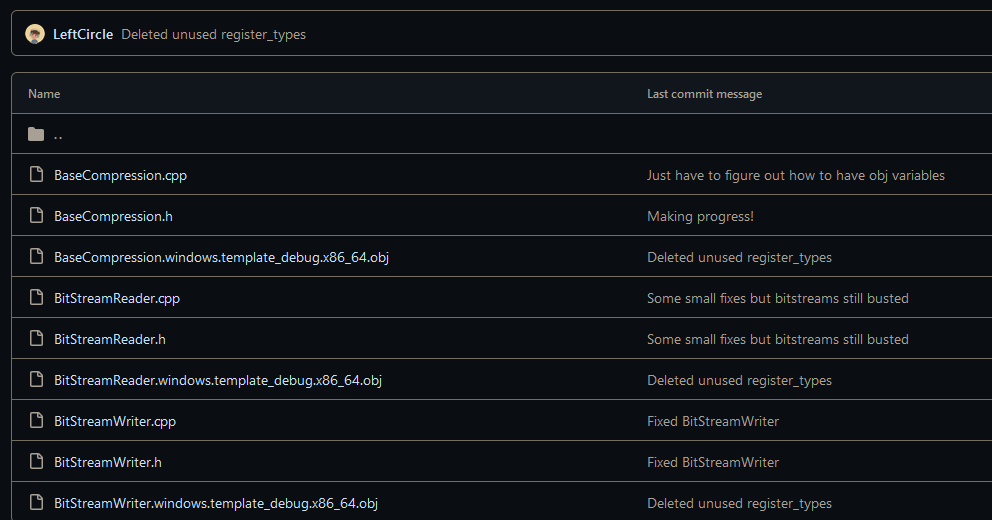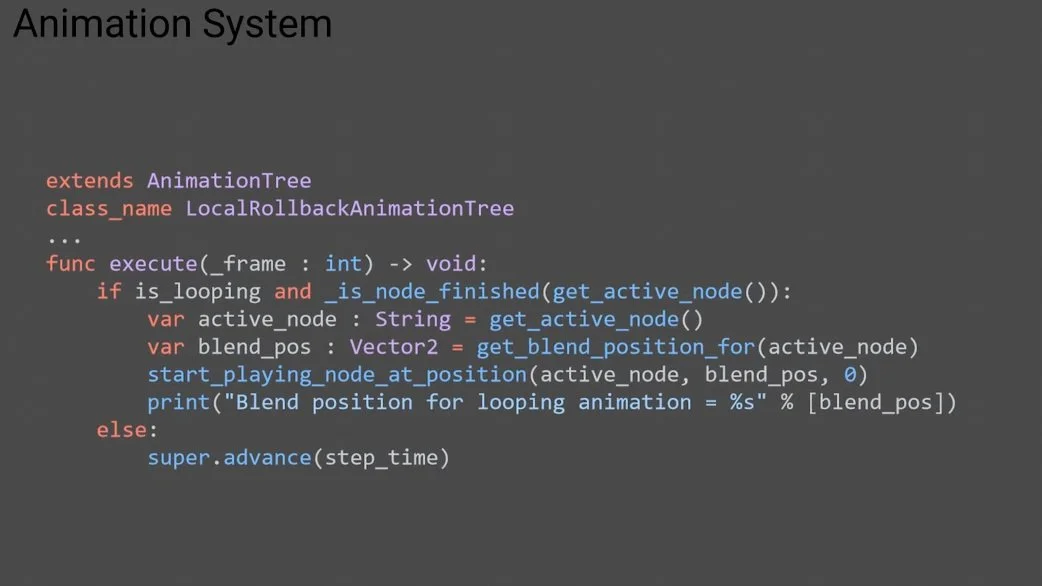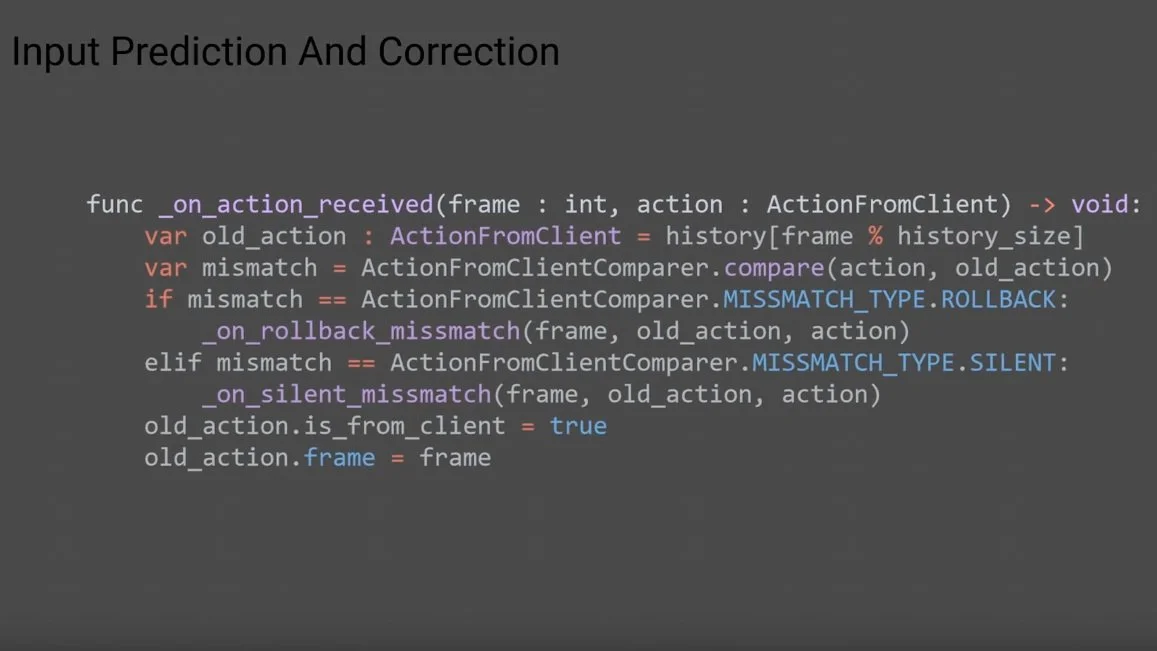A custom built network architecture.
Made for competitive multiplayer games.
Built on top of
A hybrid rollback/authoritative server networking architecture!
•
Server Side Hit Detection
•
Eight players at 60 hz
•
Rollback Prediction and Correction
•
Authoritative Server
•
Delta Compression
•
Bitpacked network packets
•
Visual smoothing for rollback corrections
•
Object Serialization
•
Input Prediction and Correction
•
ECS Architecture
•
Server Side Hit Detection
•
• Server Side Hit Detection • Eight players at 60 hz • Rollback Prediction and Correction • Authoritative Server • Delta Compression • Bitpacked network packets • Visual smoothing for rollback corrections • Object Serialization • Input Prediction and Correction • ECS Architecture • Server Side Hit Detection •
Full Source code
Check out the Repos to see almost three years of work! Over 2,500 hours of documented focused work and over 20,000 lines of code are in this project alone. The goal was to create an extendable networking solution for a competitive multiplayer game that any game developer could use and seamlessly integrate with their existing gameplay logic.
Source Breakdown - Network Architecture
Rogue Royale uses a hybrid rollback/authoritative server network architecture. Clients will perform local prediction on any resource that the server dictates the clients should know about at the time, allowing for larger world states and servers.
This architecture is heavily inspired from GDC talks on Overwatch, Rocket League, Knockout City, and more.
Source Breakdown - Bit Packing
In order to fit the world state into a single packet, we have to pack as much information as possible into each byte array. This is done through a custom bitpacking algorithm based on Glenn Fiedler’s algorithm.
There’s more to organizing the packets than just bitpacking data into them. Other strategies to cut down on packet size that were used were a basic implementation of delta compression, grouping all like components to avoid duplicating component serialization tags, and more.
Source Breakdown - Anatomy of a client frame
Anatomy of a server frame
There’s a lot that goes into each frame to keep players synced. Because we are doing a hybrid rollback/authoritative server, the clients have to perform roll back prediction and correction based off of received inputs, then verify these game states against the authoritative server which cleans up any de-sync.
This can lead to several world state updates occurring in less than 1/60th of a second.
Special care was also taken to hide any visual jitter that results from miss-predictions.
Compared to each client, the server has it easy. The server is just responsible for keeping up with player inputs, sending out world state updates, and accounting for latency to determine how far ahead of the server each client should be to keep the game as fair as possible for each player.
Source Breakdown - GDExtension C++ Optimizations
Rollback prediction requires simulating several frames at once, which means performance is critical. During prototyping, we were able to run eight players at 60 hz without any issues, but our goal was to have 30 player lobbies.
GDExtension provided an easy way to take some of the performant critical portions of the network architecture, or scripts shared between the client and the server, and convert them to C++.
You can see the source here!
Source Breakdown - Custom Animation System
Rollback prediction and correction adds some challenging problems that have to be overcome in all areas of the code. One such issue was driving local animations such as Idle.
Because everything is being driven by hand for rollback purposes, we can’t simply start an animation and let it continue to tick through idle or physics process. Even though things such as an idle animation don’t impact gameplay, we still need to track it so that when a rollback occurs, we can reset to the correct animation at the correct frame. Then, when re-predicting we can avoid any jitter from the animation frame jumping.
This is especially important when animations are driven through a state machine. A rollback could cause the animation to enter a new state, and these transitions must be deterministic in order to not cause any visual jitter.
Source Breakdown - Input Prediction And Correction
Input prediction and correction is one of the main parts of rollback netcode. Each client must predict the inputs of other clients, simulate the game world with those predictions, then verify these inputs to those they eventually receive from other clients.
The most important part of predicted inputs is not actually trying to guess the correct input each time, but is to guess an input that minimizes visual jitter or incorrect information on misspredictions.
For example, it is better to lerp movement towards zero, even though this will cause small misspredictions each frame. There are some strategies for hiding these small jitters, but this solution helps avoid large snaps in positions when players quickly change directions.






